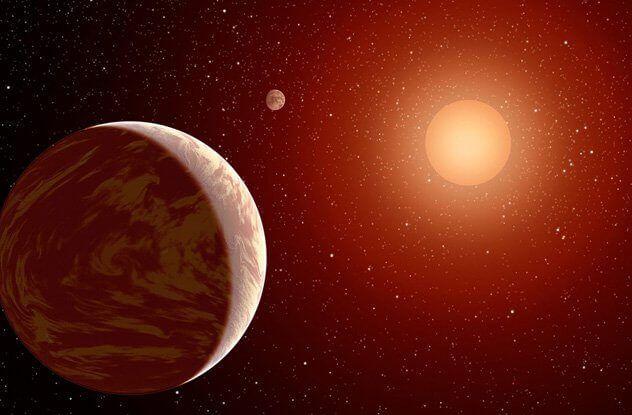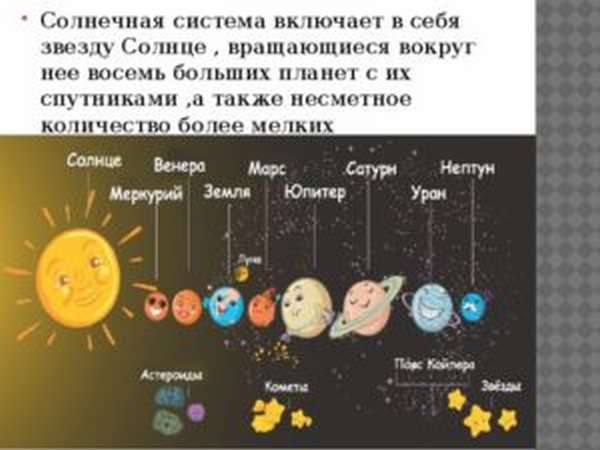Kepler-11
Содержание:
- Планеты других звезд пригодные для жизни
- Characteristics
- Potential habitability
- Nomenclature and history
- Referencias
- Planeta
- Возможность жизни
- Characteristics
- Планетная система
- Characteristics
- Примечания
- Characteristics
- Name
- Ледяной шар. Планета OGLE-2016-BLG-1195Lb
- Estrella
- Discovery and confirmation
- Примечания
- Host star
- Выводы и предположения
Планеты других звезд пригодные для жизни
Планета Gliese 581 d
Эта удивительная планета находится в планетарной системе Gliese 581 созвездия Весы, что в 20 световых лет от нашей Земли. Это очень большая планета, в 2 раза больше Земли. Звезда Gliese, которая является солнцем для планеты несколько тусклая, потому что является красным карликом, но за счет близкого расположения планеты к своему солнцу на ней температура чуть выше 0 °C, на планете царит полумрак, а в небе мерцает огромный красный шар.
Планета HD 85512 b
Эта планета на которой уже может быть жизнь. Ведь температура на поверхности составляет около 25 °C при том, что звезда слабее нашего Солнца в 8 раз, но планета находится к ней гораздо ближе. Находится планета в созвездии Парус в 36 световых лет от нас.
Планета Kepler 22b
Очень далекая от нас планета на расстоянии в 620 световых лет. Температура на планете вполне соответствует средней температуре на курортах в Греции, вот только по структуре она скорее больше напоминает Нептун, состоит в основном из огромного океана, поэтому если и есть жизнь, то в водных условиях. Так что подстраиваться придется к жизни на плаву.
Планета Gliese 667cc
Вторая планета в системе красного карлика звезды Gliese. Согласно предварительным расчетам температура на планете может быть либо -27 °C, а если атмосфера окажется по структуре, как земная, то температура будет уже +27 °C, и та и другая температура поверхности уже приемлема для жизни на другой от Земли планете.
Планета Gliese 581g
У этой планеты в той же планетарной системе Gliese 581 высокая вероятность наличия и атмосферы и воды, а ландшафт может представлять собой скалы, горы и равнины. Интересная особенность этой планеты – она всегда обращена к своей звезде одной стороной, то есть на ней нет смены дня и ночи. На дневной стороне температура довольно жаркая, как в пустыне Сахара на Земле (+71 °C), а на ночной холодно, но терпимо, как русской зимой в Сибири (-34 °C)
Планета Gliese 163c
Это очень теплая, даже скорее жаркая планета, где температура +70 °C, что ставит под сомнение растительность на поверхности, но и при таких температурах на планете может быть жизнь организмов. И человек может адаптироваться при помощи специальных солнцезащитных систем и понижающих температуру в закрытых помещениях к жизни на данной планете.
Планета HD 40307 g
Планета у звезды HD 40307 в созвездии Живописца, которая в планетарной системе шестая по счету и терпимая к жизненным условиям на поверхности. Год на планете меньше, чем на Земле – 200 суток и на ней возможно наличие воды.
Characteristics
Mass, radius and temperature
Kepler-16b is a gas giant, an exoplanet that is near the same mass and radius as the planets Jupiter and Saturn. It has a temperature of 188 K (−85 °C; −121 °F). The planet has a radius of 0.77 RJ, slightly smaller than Saturn, and has no solid surface.
Host stars

NASA Exoplanet Exploration Program «travel poster» for Kepler-16b
The planet orbits in a circumbinary orbit around a () and () binary star system. The stars orbit each other about every 41 days. The stars have masses of 0.68 M☉ and 0.20 M☉ and radii of 0.64 R☉ and 0.22 R☉, respectively. They have surface temperatures of 4450 K and 3311 K. Based on the stellar characteristics and orbital dynamics, an estimated age of 2 billion years for the system is possible. In comparison, the Sun is about 4.6 billion years old and has a surface temperature of 5778 K.
Orbit
Kepler-16b orbits around its parent stars with about 14% and 0.5% of the Sun’s luminosity, respectively, every 228 days at a distance of 0.704 AU from its stars (nearly the same distance that Venus orbits from the Sun, which is about 0.71 AU).
Potential habitability
The habitable zone of the Kepler-16 system extends from approximately 55 to 106 million kilometers away from the binary system. Kepler-16b, with an orbit of about 104 million kilometers, lies near the outer edge of this habitable zone. Although the chances of life on the gas giant itself are remote, simulations conducted by researchers at the University of Texas suggest that sometime in the system’s history, perturbations from other bodies could have caused an Earth-sized planet from the center of the habitable zone to migrate out of its orbit, allowing Kepler-16b to capture it as its moon. Furthermore, the researchers also considered the possibility of a faraway habitable planet orbiting at about 140 million kilometers away, which could retain the thermal energy needed to keep water liquid through a thick mixture of greenhouse gases including carbon dioxide and methane.
For a stable orbit the ratio between the moon’s orbital period Ps around its primary and that of the primary around its star Pp must be < 1/9, e.g. if a planet takes 90 days to orbit its star, the maximum stable orbit for a moon of that planet is less than 10 days. Simulations suggest that a moon with an orbital period less than about 45 to 60 days will remain safely bound to a massive giant planet or brown dwarf that orbits 1 AU from a Sun-like star. In the case of Kepler-47c, this would be practically the same to have a stable orbit.
Tidal effects could also allow the moon to sustain plate tectonics, which would cause volcanic activity to regulate the moon’s temperature and create a geodynamo effect which would give the satellite a strong magnetic field.
To support an Earth-like atmosphere for about 4.6 billion years (the age of the Earth), the moon would have to have a Mars-like density and at least a mass of 0.07 M⊕. One way to decrease loss from sputtering is for the moon to have a strong magnetic field that can deflect stellar wind and radiation belts. NASA’s Galileo’s measurements hints large moons can have magnetic fields; it found that Jupiter’s moon Ganymede has its own magnetosphere, even though its mass is only 0.025 M⊕.
Nomenclature and history
Kepler-10 was named because it was the tenth planetary system observed by the Kepler spacecraft, a NASA satellite designed to search for Earth-like planets that transit, or cross in front of, their host stars with respect to Earth. The transit slightly dims the host star; this periodic dimming effect is then noted by Kepler. After eight months of observation ranging from May 2009 to January 2010, the Kepler team established Kepler-10b as the first rocky exoplanet discovered by the Kepler satellite. Kepler-10 was the first Kepler-targeted star suspected of having a small planet in orbit. Because of that, verifying Kepler’s discovery was prioritized by telescopes at the W.M. Keck Observatory in Hawaii. The discovery was successfully verified. Although there had been many potentially rocky exoplanets discovered in the past, Kepler-10b was the first definitively rocky planet to have been discovered.
The discovery of Kepler-10b was announced to the public at a winter meeting of the American Astronomical Society on January 10, 2011 in Seattle. On May 23, 2011, the existence of Kepler-10c was confirmed at the 218th AAS meeting in Boston.
Referencias
- ↑
- Dumusque, Xavier; Bonomo, Aldo S.; Haywood, Raphaëlle D.; Malavolta, Luca; Ségransan, Damien; Buchhave, Lars A.; Cameron, Andrew Collier; Latham, David W.; Molinari, Emilio; Pepe, Francesco; Udry, Stéphane; Charbonneau, David; Cosentino, Rosario; Dressing, Courtney D.; Figueira, Pedro et al. (2014). «The Kepler-10 Planetary System Revisited by Harps-N: A Hot Rocky World and a Solid Neptune-Mass Planet». The Astrophysical Journal 789 (2): 154. . . .
- Fressin, François et al. (2011). «Kepler-10c, A 2.2-Earth Radius Transiting Planet In A Multiple System». The Astrophysical Journal Supplement Series 197 (1). 5. . . .
| Control de autoridades |
|
|---|
- Datos: Q47268
- Multimedia:
Planeta
La curva de luz de Kepler-10b, la que demuestra el efecto de atenuación, a medida que transita su estrella.
Kepler-10b tiene 1,4 veces el tamaño de la Tierra. Orbita a su estrella, Kepler-10, en menos de un día, y a menos de una vigésima parte de la distancia de Mercurio al sol. Su temperatura superficial es de unos 1600 Kelvin, que es lo suficientemente caliente como para derretir el oro. A esa distancia de su estrella, la probabilidad de que se encuentre anclado por marea es extremadamente alta, lo que en tales condiciones conllevaría la presencia de un océano de magma que cubriese la práctica totalidad del hemisferio diurno del planeta.
Возможность жизни
Расстояние от Kepler-22 b до Kepler-22 примерно на 15 % меньше, чем расстояние от Земли до Солнца. При этом световой поток от материнской звезды примерно на 25 % меньше, чем от Солнца. Сочетание меньшего расстояния от звезды и меньшего светового потока предполагает умеренную температуру на поверхности планеты. По оценкам учёных, при отсутствии атмосферы равновесная температура на поверхности была бы около -11 °C. Если парниковый эффект, вызванный наличием атмосферы, аналогичен земному, то это соответствует средней температуре поверхности равной примерно +22 °C.

Сравнительные размеры Земли, Kepler-22 b и Юпитера.
Kepler-22 b подобна Нептуну, состоящему в основном из протяжённой атмосферы, океана и небольшого твёрдого ядра. Тем не менее, по словам Натали Батала, одной из учёных этого проекта, «то, что в таком океане могла бы существовать жизнь — не за гранью возможного».
Ограничения по спутникам
Проект «Охота за экзолунами с Кеплером» (HEK) изучил фотометрию Кеплера для планеты, чтобы найти какие-либо доказательства изменения времени и продолжительности транзита, которые могут быть вызваны спутником. Такие вариации не были обнаружены, что исключает существование каких-либо спутников Kepler-22 b с массой, превышающей 0,54 массы Земли.
Characteristics
Kepler-10b is most noted for its rocky surface. It has a diameter 1.47 times that of the Earth. The mass of Kepler-10b is 3.72±0.42 times that of Earth and the average density is 6.46±0.73 g cm−3. It orbits its star, Kepler-10, in less than a day, at less than a twentieth of the distance from Mercury to the Sun. Its surface temperature on the star lit side is approximately 1833 K, which is as hot as a blast furnace and hot enough to melt iron.
Though CoRoT-7b was discovered before Kepler-10b and has been claimed to be rocky, there is more room for other interpretations in the case of CoRoT-7b’s composition than there is for Kepler-10b. This is due to the much larger uncertainty in CoRoT-7b’s mass (and, to a lesser extent, its radius) which is illustrated in the plot to the left. Consequently, CoRoT-7b may be revealed to be a lava-ocean planet,[clarification needed] whereas Kepler-10b must be predominantly made of rock or iron. In addition to showing the range of masses and radii consistent with the observations of each planet, the plot includes curves of compositions implied by certain masses and radii.
Kepler-10b is tidally locked to its parent star and has extreme variations in temperature between day and night sides. It also reflects about half of the starlight it receives.
Планетная система
Предполагаемые массы планет b, c, d, e и f разбросаны в диапазоне между массами Земли и Нептуна. Их низкая плотность наводит на мысль, что они не имеют подобного Земле состава. Значительное содержание водорода в атмосфере предполагается в случаях планет d, e и возможно f, в то время как b и c возможно, содержат в себе большое количество водяного льда или гелия. Малая наблюдаемая плотность, вероятно, связана с весьма протяжённой атмосферой, окружающей железно-каменное ядро. Нижний предел массы планеты Kepler-11 g составляет 10 масс Земли.
| Планета | Масса(M⊕) | Радиус(R⊕) | Период обращения (дней) | Большая полуосьорбиты (а.е.) | Эксцентриситеторбиты |
|---|---|---|---|---|---|
| b | 1,9 | 1,80 | 10,3039 | 0,091 | 0,045 |
| c | 2,9 | 2,87 | 13,0241 | 0,107 | 0,026 |
| d | 7,3 | 3,12 | 22,6845 | 0,155 | 0,004 |
| e | 8,0 | 4,19 | 31,9996 | 0,195 | 0,012 |
| f | 2,0 | 2,49 | 46,6888 | 0,250 | 0,013 |
| g | 10 | 3,33 | 118,3807 | 0,466 | <0,15 |
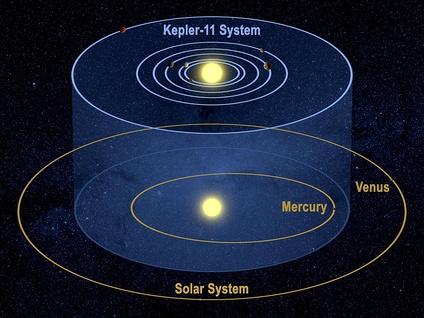
Сравнение системы Kepler-11 с орбитами Меркурия и Венеры.

Относительные размеры и расположение 6 планет Кеплер-11: родительская звезда показана жёлтым, диаметры планет увеличены в 50 раз.

Сравнение с внутренней частью Солнечной системой, диаметры планет относительно звёзд увеличены в 50 раз.
Characteristics
Kepler-10c is the outermost of the two known planets of Kepler-10, completing one orbit of the star every 45.29485 days at a distance of 0.2407 AU. The inner planet, Kepler-10b, is a rocky planet that orbits every ~0.8 days at a distance of 0.01684 AU. Kepler-10c’s equilibrium temperature is estimated at 584 K, almost four times hotter than Jupiter’s. The planet’s orbital inclination is 89.65º, or almost edge-on with respect to Earth and to Kepler-10. Transits have been observed at points where Kepler-10c has crossed in front of its host star.
Kepler-10c was originally thought to have a mass of 15–19 Earth masses. With a radius only 2.35 (2.31 to 2.44) times that of Earth (and so a volume 12–15 times that of Earth), it was believed to be unlikely to contain significant amounts of hydrogen or helium gas, since an outgassed or accreted hydrogen-rich atmosphere would have been lost over the 10.6-billion-year lifetime of the Kepler-10 system. Instead, the composition was believed to be mainly rocky, with a water fraction of 5–20% by mass. The bulk of this water was thought to be likely in the form of high-pressure «hot-ice» phases. However, in July 2017, more careful analysis of HARPS-N and HIRES data showed that Kepler-10c was much less massive than originally thought, instead around 7.37 (6.18 to 8.69) M⊕ with a mean density of 3.14 g/cm3. Instead of a primarily rocky composition, the more accurately determined mass of Kepler-10c suggests a world made almost entirely of volatiles, mainly water.
Примечания
- ↑
- ↑ Gaia DR2 (англ.)
- ↑
- (англ.). — Kepler-11 в базе данных SIMBAD. Дата обращения 17 января 2011.
- Activity indicators and stellar parameters of theKeplertargets (англ.) // Astron. Astrophys.
- Photometric amplitude distribution of stellar rotation of KOIs—Indication for spin-orbit alignment of cool stars and high obliquity for hot stars (англ.) // Astrophys. J.
- The California-Kepler Survey. I. High-resolution Spectroscopy of 1305 Stars Hosting Kepler Transiting Planets (англ.) // Astron. J.
- ↑
- Michael Mewhinney; Rachel Hoover; Trent J. Perrotto. . NASA (2 февраля 2011). Дата обращения 4 февраля 2011.
- Fraser Cain. . Universe Today (16 сентября 2008). Дата обращения 19 февраля 2011.
- Boyle, Alan . MSNBC Cosmic Log (2 февраля 2011). Дата обращения 4 февраля 2011.
- Naeye, Robert (недоступная ссылка). Sky & Telescope (2 февраля 2011). Дата обращения 4 февраля 2011.
Characteristics
Kepler-10 is a G-type star, like the Sun. With a mass of 0.895 (± 0.06) Msun and a radius of 1.056 (± 0.021) Rsun, the star is approximately 10% smaller than and 5% wider than the Sun. The metallicity of Kepler-10, as measured in [Fe/H] (the amount of iron in the star), is -0.15 (± 0.04); this means that Kepler-10 is about 70% as metal-rich as the Sun. Metallicity tends to play a large role in the formation of planets, determining if they form, and what kind of planet they will form. In addition, Kepler-10 is estimated to be 11.9 billion years old and to have an effective temperature of 5627 (± 44) K; To compare, the Sun is younger and hotter, with an age of 4.6 billion years and an effective temperature of 5778 K.
Kepler-10 is located at a distance of 173 (± 27) parsecs from the Earth, which equates to approximately 564 light years. Also, Kepler-10’s apparent magnitude, or brightness as seen from Earth, is 10.96; it therefore cannot be seen with the naked eye.
An artist’s impression of planet Kepler-10b.
Name
In the announcement paper, the discovery team stated: «Following the convention of Ref. 22, we can denote the third body Kepler-16 (AB)-b, or simply «b» when there is no ambiguity.» It is listed as Kepler-16 (AB)-b on the SIMBAD Astronomical Database. The Extrasolar Planets Encyclopaedia lists it as Kepler-16 (AB) b.
The Smithsonian Center has informally referred to Kepler-16b as «Tatooine», a reference to the fictional planet orbiting two suns that is a key setting in the popular Star Wars series. «Again and again we see that the science is stranger and weirder than fiction» said John Knoll, the head visual effects supervisor at Industrial Light & Magic, who worked on several of the movies.
Ледяной шар. Планета OGLE-2016-BLG-1195Lb
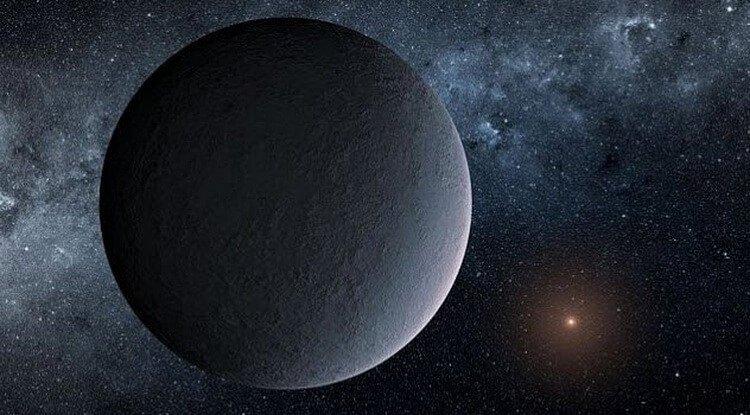
OGLE-2016-BLG-1195Lb – это ледяная планета, расположенная в 13 000 световых годах от Солнечной системы. Температура на ее поверхности может меняться от -220 до -186 градусов Цельсия, почему ее нередко называют «ледяным шариком».
Световой год – это относительная мера дистанции, которую потребуется преодолеть, если двигаться со скоростью света в течение целого года. Скорость света, в свою очередь, приблизительно равна 300 000 километрам в секунду, или более чем одному миллиарду километров в час. Другими словами, если мы захотим посмотреть на этот ледяной шар лично, то нам придется лететь к нему очень долго и на очень высокой скорости.
В настоящий момент самым быстрым из известных рукотворных объектов в космосе является космический зонд «Новые горизонты», отправленный на изучение планеты Плутон, ее лун, а также объектов Пояса Койпера в 2006 году. Его скорость составляет чуть более 58 000 километров в час, что гораздо ниже скорости света. Это все к тому, что у нас нет пока технологий, которые позволили бы посетить ближайшую систему, даже если она находится на расстоянии всего нескольких световых лет. Поэтому мы используем технологии дальнего наблюдения, чтобы обнаруживать и определять некоторые характеристики далеких экзопланет и их атмосфер. Та же OGLE-2016-BLG-1195Lb была обнаружена с помощью метода микролинзирования – когда планета проходила мимо своей звезды, наблюдалось кратковременное снижение ее яркости.
Ученые считают, что лед планеты OGLE-2016-BLG-1195Lb состоит из воды. Новость определенно отличная, но мы вряд ли в ближайшем будущем сможем воспользоваться этой водой. Гадать, конечно, можно бесконечно, но кто знает, возможно, эту планету в качестве источника свежей воды могут использовать высокоразвитые и продвинутые в технологическом плане инопланетные цивилизации.
Estrella
Artículo principal: Kepler-10
La estrella del exoplaneta Kepler-10 fue la primera en ser identificada como capaz de albergar un pequeño planeta en tránsito, colocando a la estrella en la parte superior de la lista de observaciones basadas en la tierra con el telescopio de 10 metros Keck en Hawái. Kepler-10 está situado 560 años luz de nuestro sistema solar en la constelación de Draco y es aproximadamente del mismo tamaño que nuestro sol. La edad de la estrella se estima en 11.900 millones de años.
Kepler-10, anteriormente conocido como KOI-72, es una estrella similar al Sol en la constelación de Draco que se encuentra a 187 parsecs (608 años luz) de la Tierra. Kepler-10 fue un objetivo de la nave espacial Kepler de la NASA, ya que fue vista como la primera estrella identificada por la misión Kepler que podría ser un posible anfitrión de un pequeño exoplaneta en tránsito. La estrella es un poco menos masiva, un poco más grande y un poco más fría que el Sol; Con una edad estimada de 10.400 millones de años, Kepler-10 tiene casi 2,6 veces la edad del Sol. Kepler-10 es el anfitrión de un sistema planetario formado por al menos dos planetas. Kepler-10b, el primer planeta indudablemente rocoso, fue descubierto en su órbita después de ocho meses de observación y anunciado el 10 de enero de 2011. El planeta orbita su estrella de cerca, completando una órbita cada 0.8 días, y tiene una densidad similar a la del hierro. El segundo planeta, Kepler-10c, fue confirmado el 23 de mayo de 2011, basado en observaciones de seguimiento realizadas por el Telescopio Espacial Spitzer. Los datos muestran que tiene un período orbital de 42,3 días y tiene un radio más del doble que el de la Tierra, pero una densidad más alta, lo que lo convierte en el planeta rocoso más grande y masivo descubierto a partir de junio de 2014.
Discovery and confirmation
In January 2011, the closely orbiting planet Kepler-10b was confirmed in the orbit of the star Kepler-10 after measurements of its transiting behavior (where it crosses in front of Kepler-10, periodically dimming it) and a radial velocity effect detected in Kepler-10’s spectrum provided the information needed to prove that it was indeed a planet. An additional, longer-period dimming was detected in Kepler-10’s spectrum, suggesting that a second planet existed in the system; however, there remained the possibility that this signal could have some other cause, and that the transit event was a false positive. Attempts to measure the radial velocity effects of this object, then named KOI 072.02, were fruitless; therefore, to rule out false positive scenarios, the Kepler team used a technique called BLENDER.
The application of BLENDER was supplemented by use of the IRAC instrument on the Spitzer Space Telescope, which was used on August 30 and November 15, 2010, to further define Kepler-10’s light curve at the point where KOI 072.02 appeared to transit it. It was found that the transiting object did not produce a color, an aspect that is characteristic of stars. This suggested even further that KOI 072.02 was a planet. In addition, the IRAC instrument found no difference in the transit signal when comparing the star’s light curve in the infrared and in visible light; stars that are aligned with Kepler-10 might appear visibly similar, but would appear different in the infrared.
The WIYN Observatory’s 3.5m telescope was used for speckle imaging on June 18, 2010; in addition, the PHARO camera on the Palomar Observatory’s 5m telescope was used for its adaptive optics capabilities. These observations, combined with observations of Kepler-10’s spectrum taken from the W.M. Keck Observatory, ruled out the possibility that a nearby star’s light was corrupting the observed spectrum of Kepler-10 and creating the results that had led astronomers to believe that a second planet existed in Kepler-10’s orbit. All of these possibilities, with the exception of if such a star existed exactly behind or in front of Kepler-10, were effectively ruled out; even with this, the Kepler team found that if a star was indeed aligned with Kepler-10 as seen from Earth, such a star would probably not be a giant star.
With a greater degree of certainty established, the Kepler team compared the models formed using BLENDER to the photometric observations collected by the Kepler satellite. The BLENDER technique allowed the Kepler team to rule out the majority of the alternatives including, notably, that of triple star systems. BLENDER then allowed the Kepler team to determine that although all models representing (a binary system between a single star and a double star) can resemble the light curve of Kepler-10, the aforementioned follow-up observations would have detected them all. The only possible blends remaining after ruling out hierarchical triple stars was that of determining if the curve is caused by interference from a background star, or if it is indeed caused by the orbit of a transiting planet.
Comparisons of KOI 072.02 to the 1235 other Kepler Objects of Interest in Kepler’s field of vision allowed astronomers to use models that led to the confirmation of KOI 072.02 as a planet with a high degree of certainty. KOI 072.02 was then renamed Kepler-10c. The planet’s confirmation was announced at the Boston meeting of the American Astronomical Society on May 23, 2011.
Kepler-10c was the first Kepler target to be observed using Spitzer with the hope of detecting a shallow transit dip in a light curve. At the time of Kepler-10c’s discovery, Spitzer was the only facility capable of detecting shallow transits in the Kepler data to an extent at which the data could be meaningfully analyzed. The planet was also the third transiting planet that was validated through an analysis of statistical data (rather than actual observation), after the planets Kepler-9d and Kepler-11g. In Kepler-10c’s confirmation paper, the Kepler team discussed how a large fraction of planets in Kepler’s field of view would be confirmed in this statistical manner.
Примечания
- ↑
- ↑
- ↑
- NASA (англ.). NASA (7 June 2013). Дата обращения 19 апреля 2018.
- ↑ (англ.). www.nasa.gov. Дата обращения 22 августа 2019.
- (5 декабря 2011). Дата обращения 22 августа 2019.
- ↑
- Elizabeth Howell 2017-11-15T02:48:00Z Science, Astronomy. (англ.) (недоступная ссылка). Space.com. Дата обращения 22 августа 2019.
- . exoplanetarchive.ipac.caltech.edu. Дата обращения 22 августа 2019.
- Caleb A. Scharf. (англ.). Scientific American Blog Network. Дата обращения 22 августа 2019.
- (англ.). astrobites (31 July 2014). Дата обращения 22 августа 2019.
- Fraser Cain. (англ.). Universe Today (8 October 2013). Дата обращения 22 августа 2019.
- Matt Williams. (англ.). Universe Today (22 December 2015). Дата обращения 22 августа 2019.
- ↑
- (недоступная ссылка). Дата обращения 22 августа 2019.
- Borenstein, Seth (англ.). Associated Press (5 December 2011). — «it’s not beyond the realm of possibility that life could exist in such an ocean». Дата обращения 6 декабря 2011.
- ↑
- . science.nasa.gov. Дата обращения 23 августа 2019.
- NASA Administrator. (англ.). NASA (7 June 2013). Дата обращения 30 октября 2019.
Host star
Kepler-10 is a G-type star located 187 parsecs (608 light years) from Earth. It is 0.895 solar masses and 1.056 solar radii, making it slightly less massive than the Sun, but approximately the same size.
With an effective temperature of 5627 K, Kepler-10 is cooler than the Sun. The star is also metal-poor and far older: its metallicity is measured at [Fe/H] = −0.15 (29% less iron than in the Earth’s Sun). Kepler-10 has a measured age of approximately 10.6 billion years.
Kepler-10 has an apparent magnitude of 11.2, which means that the star is invisible to the naked eye from the perspective of an observer on Earth.
Выводы и предположения
Таким образом, если четвёртая планета в системе Кеплер-160 существует, она вращается вокруг своей звезды дальше, чем Земля от Солнца, но получает примерно на 93% больше энергии, чем наша планета от своего светила. При этом температурный режим на поверхности небесного тела во многом зависит и от характеристик его атмосферы. Средняя температура Земли без воздуха была бы около -18 °C (0 °F), но парниковые газы в нашей атмосфере повышают среднюю температуру примерно до 15 °C (60 °F). Так что новая обнаруженная планета может быть холоднее Земли. Но с другой стороны, если в её атмосфере намного больше CO2 или водяного пара, она вполне может иметь температурные условия близкие к земным.
Главная проблема заключается в том, что исследователям неизвестно, на что может быть похожа её атмосфера или даже есть ли она вообще. Глубина транзитного провала означает, что планета примерно в 1,9 раза больше диаметра Земли, а это делает её условно суперземлёй. То есть, в таком случае, планеты способны удерживать более плотные атмосферы, чем они есть у Земли. Правда, нельзя с полной уверенностью сказать, что обнаруженная планета — копия Земли, а предполагаемые условия там могут быть скорее больше похожи на климат Венеры.
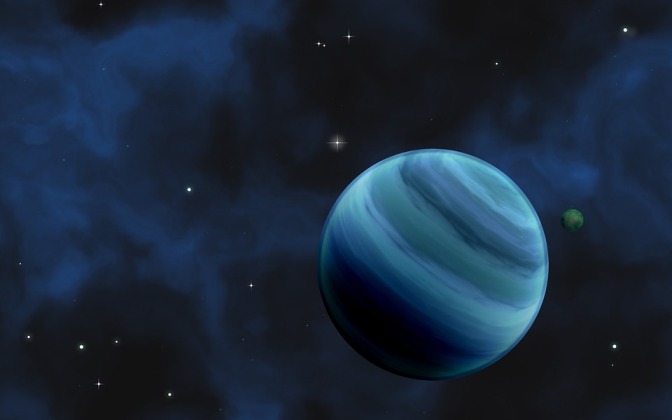
Эти выводы зависят в некоторой степени от притяжения планеты. Астрономы подсчитали, что если небесное тело будет состоять в основном из камня и воды, его масса будет в 3,5 раза больше массы Земли, что придает ему гравитацию, почти такую же, как у Земли. Но если состав — это металл и камень, то масса может быть в 10 — 13 раз больше Земли, что придаёт такому телу гравитацию в 2,5 — 3,5 раза больше, нежели у нашей планеты! А если так, то, вероятно, и атмосфера будет очень плотная.
Ещё один интересный момент заключается в том, что обнаруженная планета находится в так называемой обитаемой зоне (ОЗ) звезды, где на поверхности небесных тел может существовать жидкая вода. Учёным уже известно множество планет в ОЗ их звёзд, и большинство из них близки по размеру к Земле. Но это справедливо в основном для светил, намного меньших и тусклых, чем Солнце — красных карликов. Когда же речь идёт о звёздах, более похожих на Солнце, большинство открытых планет из обитаемых зон намного больше Земли. А обнаруженная четвёртая планета в системе Kepler-160 является самым маленьким объектом (кроме Земли, Венеры и Марса) для этой звёздной группы.
Что должно произойти дальше — это подтверждение существования предполагаемой планеты. Учёные предсказывают, что следующий транзит произойдёт 14 сентября 2020 года. Остаётся надеяться, что для наблюдений за изменением яркости этой звезды будет задействовано максимальное количество больших и чувствительных телескопов, так как падение яркости звёздного света в этом случае составляет всего около 0,05%! И астрономам придётся очень внимательно смотреть, чтобы получить нужную информацию об интересуемом объекте.
